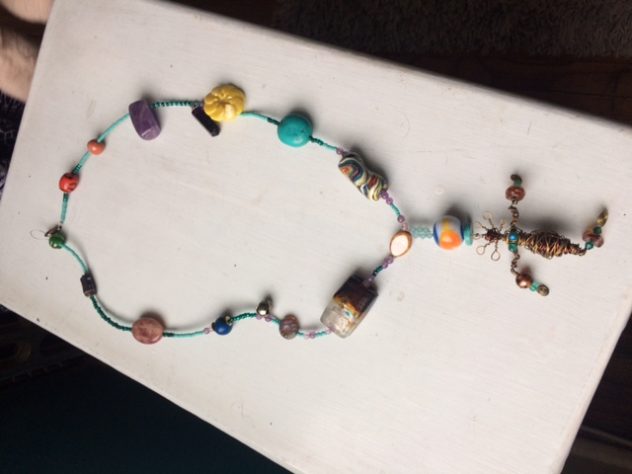As i deepen into my personal practices of spirituality and somatic healing, I’m noticing more and more how i’m weaving them together. When i once kept the spools of thread very separate, i’m now appreciating how the tapestry is more enriched when all of me is present. In this unfolding i’m dancing with, i’m learning to weave liminal threads and incorporate a more full expression of myself as much as i can. While i will forever remain a feminist therapist, i now also embrace a psycho-spiritual approach to my work as a psychotherapist.
Here’s a little known fact about me – i’m called to the magic of witchcraft. That doesn’t mean you also have to identify as a witch to receive my support. What it does look like is i infuse ritual and holistic practices into my therapy space, as a way to de-colonize my therapy practice and also embrace the ancient wisdom of nature and my own lineage.
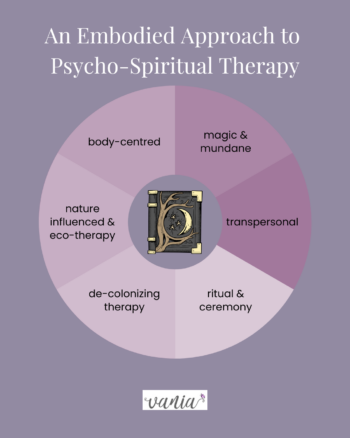
Luckily, just as somatic-based therapies have been accepted by the professional mental health world, so too are spiritual practices like meditation, and more transpersonal practices like dream work, depth psychology and rituals. They have always been here, on the margins and hidden in plain sight. Now that more and more folks are rightfully asking for this, we are starting to feel safer in bringing these ancient and healing practices into the therapy room.
There is a rich history from time immemorial of somatic practices as well as witchcraft. I have seen first-hand the healing potential of integrating soul work and body practices. Transformation and (possibly) transmutation can happen only when we truly welcome mind body soul work in what we call psychology or mental health. The term psyche means soul mind after all!
A lot of my sessions begin with a grounding exercise or breath work. I offer this to the people i support as a way to get more fully present in the session, and as a way to become more aware (attuned and interceptive) to their inner experience. This also helps slow down their overwhelm of feelings when they arrive to the session. In my spiritual rituals and sacred gatherings, we also do breathwork and grounding practices when we cast a circle or start a ceremony, for the very same reasons. It helps to shift the energy field, frequency and vibrations and let the everyday hustle and bustle of life stay out of the circle.
Breath work is beneficial as a way to altar consciousness. In Sensorimotor Psychotherapy, this practice is called Dual Awareness. It is used as a tool to release tension and embody relaxation and calm. This allows us to be more present and expand our window of capacity by titrating the feeling that may otherwise get in the way of processing what has happened.
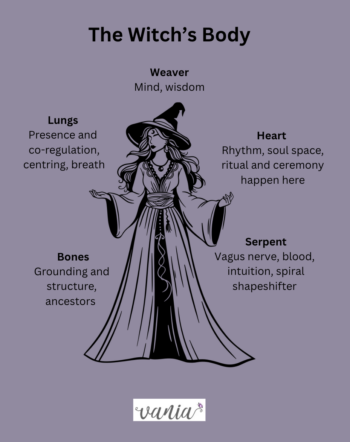
Speaking of breath work, I love Laura Tempest Zakroff’s book The Anatomy of a Witch. She devotes the book to sharing her wisdom of how the body is a part of witchcraft practices. She describes in depth the Witch Body (see the slide on the left) as a way to see how our body is our temple, a tool, and is technical. She also shares how the mind body soul trifecta and the 7 chakras have a similar analogy in The 3 Cauldrons. Based on ancient Celtic roots, this theory sees how the Cauldron of Wisdom is the mind’s capacity to have mental clarity and transform. The Cauldron of Motion is found in the heart and lungs to find balance for our emotions (e-motion!) and create movement – this is where we get to the heart of the matter. Finally, the Cauldron of Warming is in our womb and pelvis, where passion can create new things and birth sovereignty.
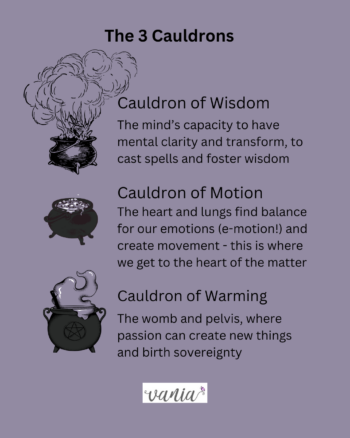
I’m sure you have heard of the book The Body Keeps the Score. Van Der Kolk’s work is not new, but a culmination of facts and evidence about how the body has wisdom and can be an alarm bell when something in our present experience is reminding us of a past trauma, harm or danger. When we can see the vagus nerve travelling through our body, connecting body parts together like a serpent, it’s easy to see how magical our body is. The amygdala is a tiny almond shaped alarm bell in the brain that gets activated when reminded of something. We know it does this and so much of the brain is till mysterious. My body has another special alarm. Have you heard of the canary in the coalmine concept? This is when a canary or song bird is placed in a cage deep in the depths of a mine. They sing when they are relaxed and feel safe. When they stop singing, this gives the miners who are working a hint that something dangerous might be imminent. My vagina does this whenever i see someone who gets cut and it’s bloody. My vagina tingles and turns on like an alarm bell out of empathy and wordy. My body is a source of knowing, and for that it is powerful as fuck. Is this just me?
We can bend time in therapy. While it’s true there may be a focus on our past in the therapy session, it’s not because we think we can go back and change things. We don’t actually want to cause harm and open old wounds. Rather, one of the powerful things we have learned about how the brain can heal trauma is to have reparative or corrective emotional experiences in our present day life. Having a reparative experience in a somatic way is a bit like witchcraft as we are rewiring our neural synapses in our brain to add in a new experience or ending for something that didn’t happen and yet feels like it did. We can’t change what happened to us. We can change our relationship to what happened to us. Neuroception is a form of alchemy and energy field attunement. Our brain can rewire the new neural pathway to create a new ending – what wires together fires together!
Speaking of fire, i love how some therapeutic practices incorporate the elements into the process of healing. One of the reasons i was pulled to Internal Family Systems was the intentional use of air, fire, water and earth as a way to heal and release an old wound or stuck Part. This article offers a beautiful ritual for you to do yourself. Yes, Dick Schwartz was heavily influenced by Carl Jung’s work as well as shamanistic practices. IFS is internal animism or shamanist work, and for good reason – these rituals and ceremonies are the original therapy!
Let’s take a moment and notice how the elements can be a resource: In Air, we can cast a new spell: In my last journal article, i spoke at length about the power of story telling and talk therapy. Speaking our truth out loud is like casting a spell. It lessens the hold it has on our body and can act as an alchemical change. It’s like shedding emotional skin. Air is a form of communication. We gather information by our sense of smell. Our olfactory system is our most ancient sense. With Fire, we can alchemize our anger and keep our inner spark alive. With Earth, we embody our ancestors and also root into this present moment. And with Water, we can find flow and honour our wellspring of feelings. All of these have rituals and practices that can enrich us in our healing.
Carl Jung shares this: “The main interest of my work is not concerned with the treatment of neuroses but rather with the approach to the numinous. But the fact is that the approach to the numinous is the real therapy, and inasmuch as you attain to the numinous experience you are released from the curse of pathology. Even the very disease takes on a numinous character.” I love this reflection as it lands in my own body as confirmation – we are more than our labels an diagnosis. We are moved by emotion when we hear that first note of a song that always moves us to tears, the glory of a cloudless night sky, being in a forest and that light bubble that dances on my hand. Numinous experiences are the moments of wonder and awe, of the not quite explainable and yet is so real. The reflect the mysteries of life are as present as the tangible, logical brain experiences. The numinous moments are where glimmers, glow moments and expanding our nervous system capacity live. They are what rewire our souls’ blueprint – we are meant for more and we are all one.
In her book, Anatomy of a Witch by Laura Tempest Zakroff shares her term “witchual.” I’m so here for a good pun, and this one really captures the ritual of witch-influenced ritual crafts and pratices. Rituals are a part of a ceremony as a way to deepen into an experience. They enhance our presence and participation in something. This can lead to a sense of agency as a ritual has a purpose and result. This is a big reason why i’m drawn to practical magic like herbal medicine and ritual crafts like how a witch ladder talisman becomes a guide. I also keep a selection of oracle cards at my office, and at times i either begin or end a session with a card pull. A ritual doesn’t have to be lengthy or complicated to be powerful. Having a way to begin and close a session together is a beautiful way to honour the process.
I see a therapy session as a ritual and ceremony. Each session has a clear beginning, middle and end and in the overall work. Sometimes, we start and end with breathwork. Meditation is a big part of how we access our Parts and become more aware of our body’s sensations. Sometimes, someone i support asks to pull an oracle or tarot card or do a specific ritual to honour an ending. Therapy is a way that folks can be witnessed in their growth and transformation. This is also a big goal in ceremonial gatherings – to be witnessed. There is a blend of masculine structure and a trust in the feminine strength of following an organic flow.
Dance and movement are a part of witchcraft practices as well as somatic therapy. I have learned some beautiful ritual dances myself, and have grown up with the magic of dance to help me process my emotions, release my sadness and stress. I find dance, be it ecstatic dance or ballet, 5Rhythms or a group rave to be a conduit for an altered state of consciousness. Dancing helps us access a felt sense of joy and pleasure, and to express ourselves in non-verbal ways. Another benefit of dance as a somatic resource is that it can connect us to our ancestral and cultural roots. As a child, i used to take Serbian traditional dance classes, in a circle with my peers. When i join in circles now, i feel this connection alive in my body, like i’m dancing with the ghosts of my past and former lives. I know some time ago in my lineage, my Babas (grandmothers) worshipped and danced for the Goddess. Again, Zakroff reflects this sentiment well with the following words: “Finding the song of our bones can help us heal past wounds and aid our own work.” Sayings ‘we feel it in our bones’ or ‘it has good bones’ comes from somewhere and is so wise! The human body is truly a vessel for magic. Our breath can inspire something new, our blood is our engine that moves us through life, and our mind can cast spells.
Similar to dance, there is also a connection between the therapeutic resource of psychodrama and witchcraft. For instance, tarot is the card depiction of the fool’s journey. It is a story that steeped in our ancestors’ way of turning to wise guides and elders. Tying in myths, fairy tales and god/goddess stories are a key ingredient in psycho-spiritual therapy. It is the story that matters, not the medium. We are social creatures and can see the relevance of an archetypal story in our own personal plight. This transfers well to how role plays can be a catalyst. When we act out a limiting belief or an alternate ending, our body creates an alchemical metamorphosis.
Witches shapeshift as a way to bend reality and also glean wisdom. It is done intentionally as a way to change an energetic frequency, and can be a way to connect to more-than-human guides. In another way, when feeling threatened or scared, people default to a trusty (albeit faulty) nervous system response of fight/flight/fawn/freeze. It is a type of shapeshifting as way to protect ourself that needs an update so we can instead embody power within. Have you ever felt frozen like a deer in flashlights or like a turtle who falls into your shell? Maybe you want to flee the scene of conflict or scream your truth outloud. That’s a Part who is shapeshifting for you. I think of the powerful book and movie Night Bitch. The main character literally shapeshifted as a way to state shift and create a change in her life. I can’t say more because it will spoil the movie for you!
We can use this chameleon energy intentionally, and with full awareness. For instance, when i want to feel more empowered and strong, i put on the suit of my Inner Warrior. I envision putting on my armour and stand like a Warrior. When i feel the need to buckle down and write this article, i channel my inner Carrie Bradshaw. And, when my kids are being treated unkindly, i know i’m not alone when i want to embody my Inner Mama Bear!
Herbs and holistic care also offer a positive impact on the body. They act as a way to connect to the natural world and remember the ancient wisdom, as well as the truth that we too are a part of the natural world. In this very helpful article, the author shares the following: “In witchcraft, this is often expressed through the use of natural objects such as stones, crystals, and feathers, which are believed to have energetic properties that can be harnessed for healing and transformation.” Similar to pagan and earth-based natural remedies, somatic healing offers such deep guidance and wisdom and guidance. What we now call Ecosomatics is also ancient medicine, practices, and rituals that integrate forest baths, walks, and meditation. While i don’t explicitly use herbs in my therapy practice, i have essential oils on hand as a means to self-soothe. I offer tea and grounding techniques that help folks resource in their own body. As i entrust in people’s autonomy and agency, i also inquire about their own knowledge and practices that may infuse plant medicine, herbs, crystals, and other holistic resources.
Similar to the elements, the use of the senses also offers such support and healing. When we slow down and become attuned to our body’s sensations and become present with the here-and-now, we are also given the gift of being with nature. Humans are nature too and so when we re-inhabit the home that is our body, we are bending time and coming back home to our innate intelligence and knowing. This deepens our self-trust and intuition, and also gives us a felt sense of belonging – to ourselves. When we blend these practices into our life, they can heal more than ourselves. Our ancestral wounds and legacy burdens get tended to, our bodies become more connected to our mind, and our soul’s journey becomes more present so that we can become our truest self.


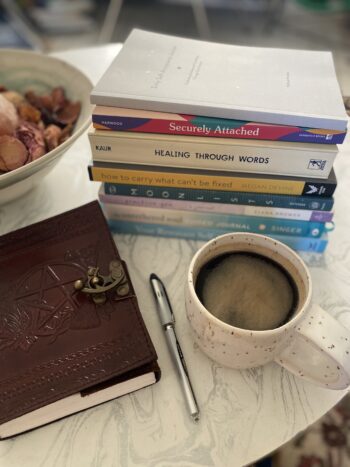
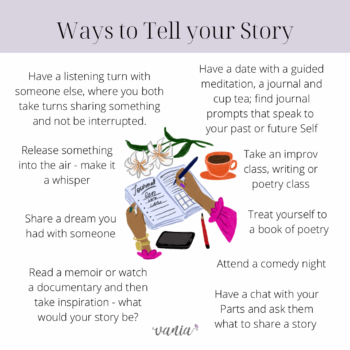
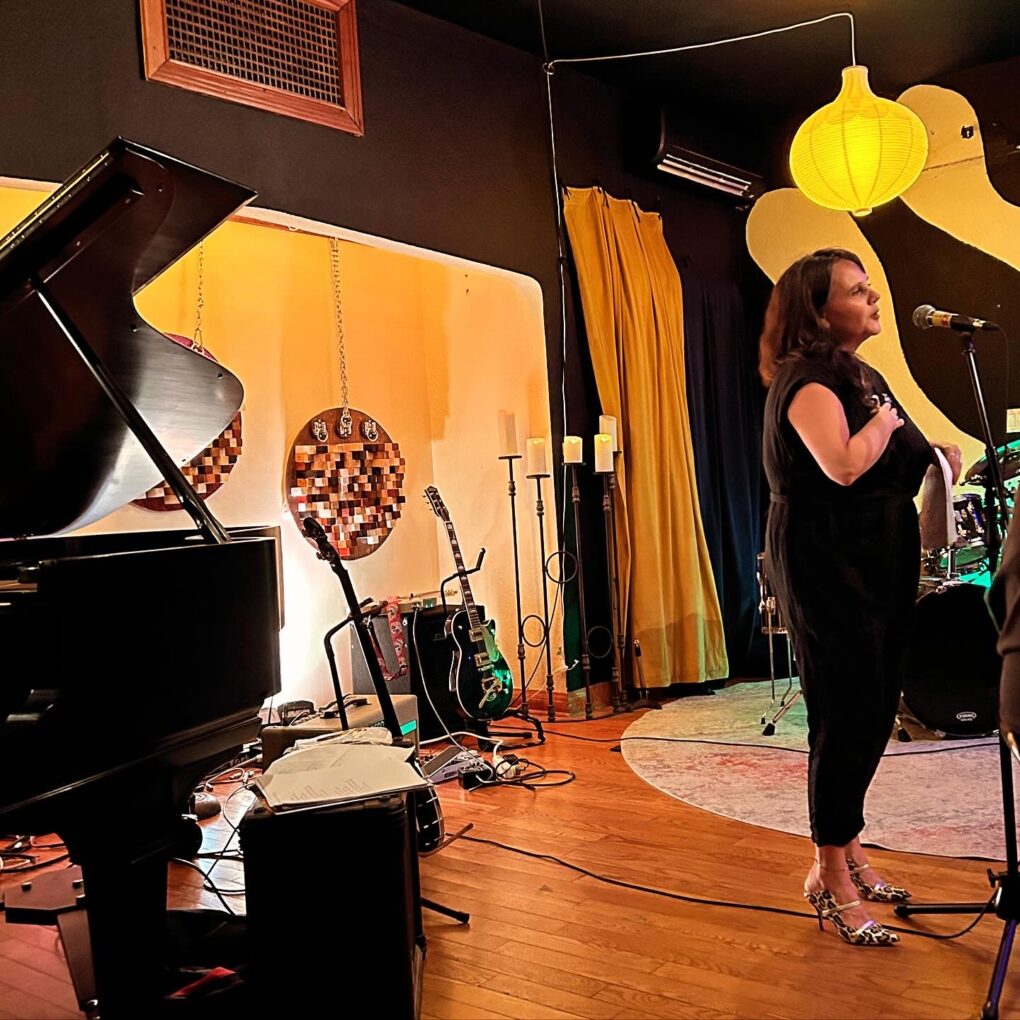 Stephen Jenkinson shares that a ceremony is the punctuation of a passage of time. I love this analogy as it captures the rightful placement at the beginning rather than just the ending. The ceremony is not meant to be the goal, but rather the pause between. So when my partner turned 50 in May, i knew we had to implement a more soul-lead ceremony into the celebration of his life. Turning 50 is a pretty significant punctuation. While I can’t believe i’m married to a 50 year old, i’m just a year away myself. His turning around the sun has given me pause to notice where we are in our life journey. It is a marker of sorts, not unlike Summer and June, as a practice to make sure we are where we want to be.
Stephen Jenkinson shares that a ceremony is the punctuation of a passage of time. I love this analogy as it captures the rightful placement at the beginning rather than just the ending. The ceremony is not meant to be the goal, but rather the pause between. So when my partner turned 50 in May, i knew we had to implement a more soul-lead ceremony into the celebration of his life. Turning 50 is a pretty significant punctuation. While I can’t believe i’m married to a 50 year old, i’m just a year away myself. His turning around the sun has given me pause to notice where we are in our life journey. It is a marker of sorts, not unlike Summer and June, as a practice to make sure we are where we want to be.